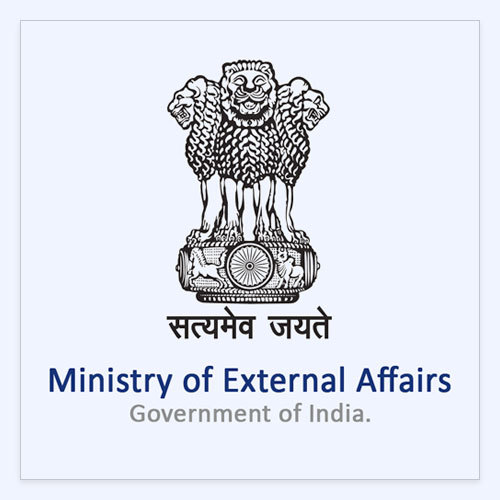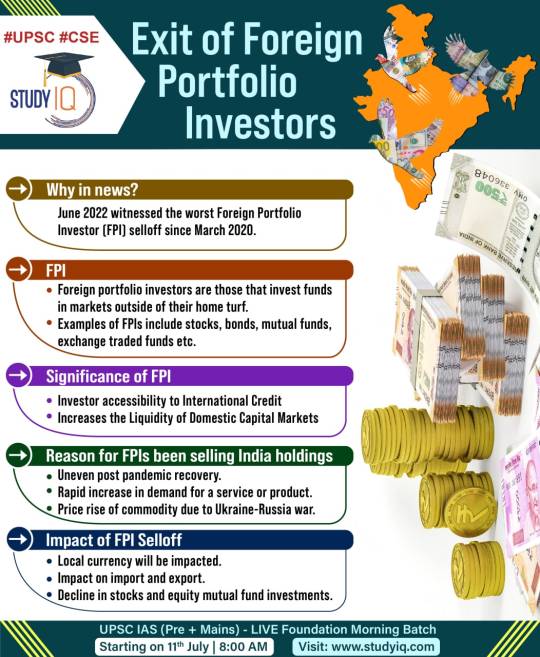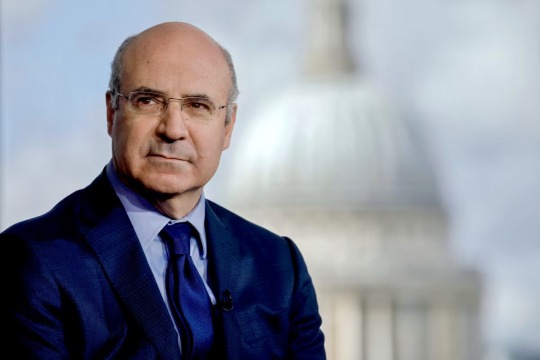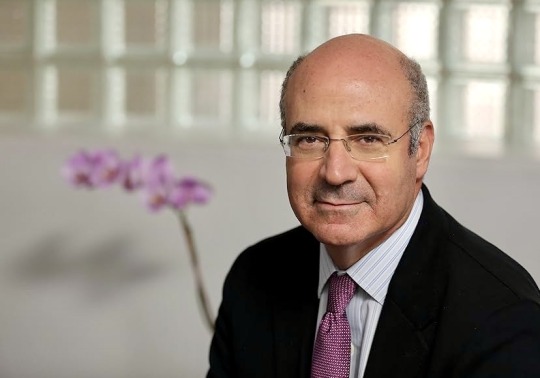#foreign portfolio investment
Text
What are the Advantages if you invest in FDI (foreign direct investment)?

A Tale of Two Entrepreneurs
Consider the story of Raj and Sarah, two ambitious business owners. Raj, a seasoned Indian entrepreneur, has been successfully running a textile manufacturing company for years.
Sarah, a visionary from the United States, has been eyeing India's vast market potential for her innovative textile technology.
Raj and Sarah's paths cross when Sarah decides to invest in Raj's company through FDI.
This strategic partnership not only brings Sarah's cutting-edge technology to India but also provides Raj with the capital and expertise to expand his operations.
Together, they create a synergy that propels their businesses to new heights.
The Benefits of foreign investment in India
Access to Global Markets and Technologies: FDI brings advanced technologies, innovative business practices, and global expertise to Indian companies, enabling them to compete on a global scale.
Job Creation: It contributes to India's employment growth by creating new job opportunities and upskilling the local workforce.
Increased Foreign Exchange Reserves: FDI inflows contribute to India's foreign exchange reserves, strengthening the country's economic stability.
Technology Transfer: It facilitates the transfer of advanced technologies, helping India to bridge the gap between its domestic and global technological capabilities.
Infrastructure Development: including transportation, communication, and energy sectors.
Knowledge Transfer: It fosters knowledge transfer between Indian and foreign companies, enhancing the skills and capabilities of the local workforce.
Increased Competition: Foreign investments promote healthy competition in the Indian market, driving innovation and efficiency among domestic companies.
Improved Corporate Governance: FDI encourages Indian companies to adopt international best practices in corporate governance, enhancing their overall performance and credibility.
Selling FDI Shares in India
Investors looking to sell their FDI shares in India can do so through a well-established process. Samarth Capital, a leading financial services provider in Mumbai, offers comprehensive FDI services, including share sale and purchase assistance.
Conclusion
There is a great opportunity for both Indian and foreign companies to leverage their strengths and create a mutually beneficial partnership if they invest in FDI. By embracing FDI, India can unlock its full potential, fostering economic growth, job creation, and technological advancement. As you navigate the world of FDI, remember that Samarth Capital is here to guide you through the process, ensuring a smooth and successful investment experience.
#Selling FDI shares in India#Investing in Indian Stocks#Investing in Indian Companies#Investment restrictions in India#Mutual Funds in Mumbai#foreign direct investment#Foreign Direct Investment Policy of India#foreign portfolio investment#Foreign Portfolio Investors in India#FDI in India#Invest in FDI
0 notes
Text
Maximizing Investments through Foreign Portfolio Investors
In the world of finance, where every decision can have a huge impact on investment, the super savvy investors turn to the expertise of administrative services and investment advisory. For Foreign Portfolio Investors (FPIs), navigating the global market requires not only a deep understanding of investment opportunities but also a seamless backbone to manage administrative needs.
Fund administrative services form the vital aspect of any successful investment strategy. From managing regulatory compliance to handling regular operations, these services ensure that the investment engine runs seamlessly. FPIs, operating in diverse global markets, often find themselves dealing with complex regulatory functions. These services simplify the burden by providing all-round support to meet the needs for streamlining all the operations.
The role of investment advisory cannot be overstated in this maze of global finance. Investment advisers act as strategic partners, guiding FPIs through the global investment opportunities. Their expertise goes beyond traditional asset management, collating insights into market trends, risk analysis, and the identification of most optimal investment avenues.
For FPIs, who often operate in unfamiliar global territories, the advisory services become indispensable. These professionals offer an understanding of local markets, helping FPIs make well-informed decisions that work in tandem with their risk appetite and investment objectives.It helps in gaining confidence for dealing with the unknown.
The investment magic happens when there is a synergy between these administrative services and the advisory. Foreign Portfolio Investors(FPIs) stand to gain significantly by integrating these two pillars of financial management. The seamless coordination between administrative services and investment advice ensures that FPIs not only meet regulatory requirements but also optimize the investment strategies for better returns.
The dual impact of fund administrative services and investment advisory is reflected in enhanced efficiency for FPIs. While the time-consuming administrative tasks are delegated to experts, it frees up the valuable time for FPIs to solely focus on strategic decision-making. It leads to cost savings and also positions FPIs to capitalize on time-sensitive opportunities in the market.
In conclusion, this partnership is a formidable combination for Foreign Portfolio Investors. It not only ensures compliance with regulatory frameworks but also empowers FPIs to make well-informed, strategic investment decisions in the global arena.
0 notes
Text
Investment Strategies
let’s delve into some detailed investment strategies with examples applicable to the Indian stock market:
1. Long-Term Investing:
Strategy: Invest in fundamentally strong companies with a long-term horizon, aiming to benefit from compounding.
Example: Invest in a well-established company like HDFC Bank (HDFCBANK) known for its stable growth, strong financials, and consistent dividend…

View On WordPress
#BSE (Bombay Stock Exchange)#Equity Market#Exchange-Traded Funds (ETFs)#Foreign Institutional Investors (FIIs)#Foreign Portfolio Investment (FPI)#Indian Stock Market#Indian Stock Market BSE (Bombay Stock Exchange) NSE (National Stock Exchange) Sensex Nifty Stock Exchanges Stock Indices Equity Market Inves#Investment in India#Market Analysis#Market Performance#Market Regulation#Market Trends#Market Volatility#Mutual Funds#NSE (National Stock Exchange)#Sensex#Stock Exchanges#Stock Indices#Stock Investing#Stock Trading
0 notes
Text
#U.S REAL ESTATE MARKET#INVESTMENT PORTFOLIO#canadian investing in US real estate#investing in US real estate#canadians investing in US real estate#foreign investment in US real estate#Canadian Investing In US#property invest USA#Investing in US real estate as a canadian#Investing in US real estate from canada#Investing in U.S. Real Estate from Canada#property investment company#investing in us real estate for canadians#calgary meetups
0 notes
Text
Investors Find the 'Other' Billion-Person Nation; It's India, and Portfolio Managers Say It Might Outshine China; Foreign Investing Is Opening Up
Investors Find the ‘Other’ Billion-Person Nation; It’s India, and Portfolio Managers Say It Might Outshine China; Foreign Investing Is Opening Up
At a time when China commands more attention from investors than any other emerging market, many U.S. fund managers are starting to take a closer look at the other billion-person nation: India.
India has received only a fraction of the money that corporations have invested in China, but portfolio managers say India is in a number of ways the more attractive stock-market investment.
The South…

View On WordPress
#and Portfolio Managers Say It Might Outshine China; Foreign Investing Is Opening Up#Investors Find the &039;Other&039; Billion-Person Nation; It&039;s India
0 notes
Photo

0 notes
Video
youtube
Billionaires Don’t Want You to Know About This Supreme Court Case
A majority of Americans support a wealth tax. But, surprise, surprise, the wealthy Republican megadonors who’ve been plying Supreme Court justices with gifts and vacations do not. And if those justices don’t recuse themselves from a case I’m about to explain, it will be a grave conflict of interest and potentially block Congress from ever enacting a wealth tax.
Moore v. U.S. concerns a one-time tax charged in 2017 on profitable foreign investments regardless of whether investors cashed them in.
The plaintiffs argue that the tax is unlawful under the 16th Amendment, which gives Congress the power to tax incomes.
Right now the super wealthy can take advantage of increases in the value of their stock portfolios by using stock as collateral to borrow all the money they need instead of taking taxable income. It’s a way to have their cake and eat it too.
If the Supreme Court buys the argument that the Constitution does not give Congress the power to tax increases in the value of investments, that would make it impossible to ever pass a wealth tax.
But here’s the kicker: This case raises profound conflicts of interest on the Supreme Court.
Justices Samuel Alito and Clarence Thomas both accepted luxury vacations from billionaires who stand to gain financially and are tied to conservative political groups that are responsible for appealing the case.
No wonder Americans don’t trust the Supreme Court.
So what can you do?
First, share this video to spread the word about this little-known case.
Second, contact your representatives, and urge them to demand that justices with conflicts of interest recuse themselves.
And third, if your representative doesn’t support a wealth tax to combat inequality, replace them with somebody who does.
With so much at stake, now is not the time to sit on the sidelines.
579 notes
·
View notes
Text

Born on 23 April 23, 1964 in Princeton, NJ, William Felix Browder is an American-born English financier and political activist. He is the CEO and co-founder of Hermitage Capital Management, the investment advisor to the Hermitage Fund, which at a time was the largest foreign portfolio investor in Russia.









43 notes
·
View notes
Text
US State and local governments are giving AMERICAN TAX DOLLARS to fund GENOCIDE in GAZA

State and local governments across the US are scooping up Israeli bonds at record levels, lured by a mix of hefty returns and government incentives for Israeli debt, but the move is sparking backlash among some locals.
States across the US have accelerated their purchase of Israeli bonds since 7 October attacks on southern Israel. Last year, Israel sold a record $3bn in bonds.
Israel’s need to fund its war on Gaza and the eagerness of many US state governments to buy Israeli debt has led to states becoming massive investors in the country.
Palm Beach County in Florida has now become the world’s largest investor in Israeli bonds, with about $700m of its $4.67bn portfolio invested in the foreign country’s market, Joseph Abruzzo, clerk of the circuit court and comptroller, announced in March.
“I am proud to stand with what I consider our greatest ally in the entire world – Israel,” Abruzzo said in an interview with the Jewish Press Agency. But the move has sparked local backlash.
Some residents of Palm Beach County filed a lawsuit this month against the county. Protestors have also expressed their anger at the local courthouse.
“Our tax dollars should go to our needs and not fund the genocide,” a Palm Beach County resident who called herself Lydia S told the local Wptv news. Abruzzo said he expected the “frivolous” lawsuit to be dismissed.
In May, Ohio treasurer Robert Sprague said the Rust Belt state had purchased $30m in two-year fixed-rate Israeli bonds. “With its long track record of providing competitive rates and timely and reliable repayments, Israel Bonds continues to be a sound investment for Ohio,” Sprague said in a statement.
Israel is growing more isolated on the world stage as a result of its offensive on Gaza, which has killed at least 36,050 Palestinians and wounded an additional 81,026.
It is also the subject of a case at the ICJ, while the chief prosecutor of the International Criminal Court has called for arrest warrants for Israeli leaders. But investors have shrugged off the international censure.
During its first international bond sale since 7 October, Israel raised a record $8bn despite Moody’s downgrading Israel’s credit.
#free Palestine#free gaza#I stand with Palestine#Gaza#Palestine#Gazaunderattack#Palestinian Genocide#Gaza Genocide#end the occupation#Israel is an illegal occupier#Israel is committing genocide#Israel is committing war crimes#Israel is a terrorist state#Israel is a war criminal#Israel is an apartheid state#Israel is evil#Israeli war crimes#Israeli terrorism#IOF Terrorism#Israel kills babies#Israel kills children#Israel kills innocents#Israel is a murder state#Israeli Terrorists#Israeli war criminals#Boycott Israel#Israel kills journalists#Israel kills kids#Israel murders innocents#Israel murders children
20 notes
·
View notes
Text
Neha Wadekar in Baringo county, Kenya
Susan Chomba glares out the window of the Prado Land Cruiser at dozens of motorcycles speeding in the opposite direction. Each motorcycle carries at least five bags of charcoal and for every bag, at least three medium-sized acacia trees must be chopped down and burned. Charcoal production is banned in Kenya, but is still widely used for domestic heat and cooking.
Chomba loves trees. She can rattle off the scientific and local names of countless species and detail their ideal growing conditions. She holds a PhD in forest governance and master’s degrees in agriculture development and agroforestry. She is director of food, land and water programs, continent-wide, at the World Resources Institute (WRI), a global environmental research non-profit. She manages a portfolio of $20m and a staff of 100.
She is a rarity.
Roughly 12% of the world’s top climate scientists are women and fewer than one percent are from Africa – a continent hard hit by climate change. “If you look at the way the world operates, it’s almost blind to the fact that women bear the biggest burden and brunt of climate change,” Chomba says. That Chomba is an African woman in such a key role is potentially revolutionary, especially because she goes out of her way to solicit the views of those most affected and often most unheard – local farmers, community elders and, notably, women.
“The way climate is seen in the world, it’s seen very much from a masculine perspective,” Chomba says. For example, while male climate scientists focus heavily on developing renewable sources of energy to replace fossil fuels like oil and gas, Chomba believes they pay far less attention to the hundreds of millions of women worldwide who are burning wood for tasks like cooking. Incorporating the perspectives of women – particularly poor, rural women – would better ensure comprehensive solutions, she says.
Chomba is 40 years old but still remembers the hunger pangs she suffered as a child when the land failed to yield enough food for her family. More people, most likely women and children, will suffer the same fate, or worse, if wise and profound changes aren’t made soon.
Today, she is traveling with a team of WRI experts from Nairobi to Baringo county in Kenya’s Great Rift Valley, home to mountainous forests that supply 75% of Kenya’s water. But the expansion of agriculture into previously natural environments, deforestation for charcoal and logging, urbanization and climate change have ravaged the land, leaving it thirsty and bare. Locals say they haven’t had a yield of maize or beans, their staple crops, in three years.
Chomba and her team visit a giant gully that has split the ground into two in the middle of the farmland. The area has been overharvested and overgrazed, with few natural grasses or indigenous trees left to hold the soil together. That, combined with climate change and an intense dry season, has left the earth looking like parched, cracked skin.
An elderly farmer points to a tree and says cooking oil can be extracted from the native species.
“How can we do this through the Terrafund?” Chomba asks her team, referring to the WRI’s lending program to support businesses addressing land degradation and restoration. “We have a muze [an elder] with knowledge, a fund that wants to invest and a place that needs seedlings.”
There’s an urgent need for community-driven ideas, but hasty, half-baked “solutions” can exacerbate harm, Chomba argues on the drive to Baringo county. At the end of last year, for example, Kenya’s newly-elected president, William Ruto, announced his intention to plant 15bn trees in Kenya by 2032. But Chomba says the plan fails to specify which species will be planted (native or foreign), where they will be planted (forest reserves or communal farms), why they will be planted (for timber, carbon, fruit, or soil fertility), and who will actually grow them.
“The devil is in the details, and that’s lacking,” Chomba says. “If you don’t address deforestation causes, forget about your tree planting. It’s useless.”
Chomba grew up in Kirinyaga county in central Kenya, where her mother cultivated a small plot of land owned by a step-uncle. Chomba’s mother grew capsicum and french beans and formed cooperatives with other farmers so they could pool their products for export. Because her mother was a single parent and was always working, Chomba was largely raised by her grandmother.
“She used to tell me that if she could have gone to school, she would have studied so much that knowledge would be smoking out of her nostrils,” Chomba says. “She made sure that I knew that education was my only path out of poverty, out of the life we had back then.”
When Chomba was nine, her mother wanted to send her to a local boarding school, but the admissions staff in Kirinyaga took one look at her shabby clothes and turned her down.
“I’m not ashamed of my childhood poverty,” Chomba says today. “It’s what propelled me back then and what makes me sensitive to-date.”
Instead, Chomba traveled alone on a bus to a different boarding school in Western Kenya. A few years later, when Chomba’s mother ran out of money, Chomba returned to the provincial high school in Kirinyaga. Each student was given their own small patch of land to farm, and Chomba grew cabbage because they thrived in Kirinyaga’s cold climate. She experimented with organic farming, opting to use garlic and blackjack instead of chemical pesticides.
Chomba flashes a broad smile: “My cabbages were absolutely massive.”
In the late 1990s and early 2000s, when Kenyans were pushing back against the dictator Daniel Arap Moi, Wangari Maathai was pressing for forest conservation and fighting for multiparty democracy. Maathai, the first African woman to win a Nobel peace prize, inspired a generation of young, female Kenyan environmentalists.
“We just admired Professor Wangari,” Chomba says. “She taught us that nature belongs to all of us.”
Chomba wanted to study law, but she missed the university cut off by a single point. Her second choice was agricultural economics, but by a strange twist of fate, she was placed in a forestry course. It wasn’t until her third year, when Chomba took an agroforestry class, that she realized she had found her calling.
“The gods chose my life for me,” she says.
While Maathai was protesting in the streets, Chomba chose another path more aligned to her strengths – research.
“I have a lot of respect for activism, I think we need activism,” Chomba says. But she opted instead for a job that relies on evidence-based data as the basis to change systemic structures.
Chomba joined the International Centre for Research in Agroforestry (ICRAF) and led an eight-country land restoration program, called “Regreening Africa,” which restored one million hectares of Africa’s degraded lands. By now a single parent, Chomba had to leave her son at home with her mother to pursue dual master’s degrees in Europe.
“[S]he had to really fight,” says Tom Vandenbosch, one of Chomba’s first mentors at ICRAF. “Her having a young son when she had to move to Europe to finish her studies – that’s not something which is so easy to do.”
Chomba returned to ICRAF as a climate change researcher advising some of the brightest diplomatic minds in Africa convened to tackle climate change at the Conference of Peoples (COP). Chomba called it “the most humbling space I ever occupied as a young researcher,” and says the job “touched the social justice part of my soul.”
This experience convinced Chomba to get her PhD at the University of Copenhagen.
Chomba married her husband in 2009 and gave birth to their son in 2010. Both her sons seem interested in the environment, but “kids never do what their parents want them to do”, Chomba admits.
Chomba's team pulls up to the Baringo county government offices after a five-hour drive, enters a tiny office and crams around a table occupied by local officials. She will need their staff, resources and approval to operate in the county.
She strategically mentions budget numbers for Terrafund and as she utters the amount set aside for the Greater Rift Valley region – $6m – the officials straighten up, their interest piqued.
But challenges remain. Chomba broaches the issue of illegal charcoal production. One government official waives aside her concerns, citing Kenya’s struggling economy. “They are selling charcoal because they have no other option,” he says.
Chomba rolls her eyes.
The following morning, Chomba spends hours in the stifling heat speaking with women who are part of a grassroots gender-empowerment cooperative. Florence Lomariwo fled her home as a child to escape female genital cutting and child marriage and became a college-educated teacher. She describes how the drought is causing armed clashes between male herders, who are ranging farther from home to graze and water their livestock. Left alone, women are bearing the brunt of this.
“Most of the women are suffering deaths because of lack of water,” Lomariwo says. “For our family to survive, a woman [must] travel, even if it is 100km.”
Monicah Aluku, a 37-year-old widow, speaks up.
“Feel our pain,” she says. “There is no water. Women are walking so far to get water that they are miscarrying. There is no healthcare system. Kids are drinking dirty water and getting typhoid. We are really suffering.”
Chomba leans forward. She nods intently with a serious, steady gaze. Chomba and her team were scheduled to head back to Nairobi around 1pm, but they don’t leave until hours later. And only after Chomba has heard from every woman in the room.
This story was produced by the Fuller Project, a global newsroom dedicated to groundbreaking reporting that catalyzes positive change for women
78 notes
·
View notes
Text
Fund Administration Services: The Backbone of Sound Financial Planning
Fund Administration Services emerge as the key in the complex world of financial planning, knitting together the threads of investment and portfolio management to build a strong foundation for success. As financial landscapes change, the function of these services becomes increasingly important in maintaining smart and efficient financial planning techniques.
Fund Administration Services comprise a wide range of operations that are critical to the effective operation of investment portfolios. These services, which range from regulatory compliance to bookkeeping, are the foundation of every well-structured financial strategy. This comprehensive support guarantees that both investors and financial institutions can confidently manage the intricacies of the financial sector. A seamless connection with investment and portfolio management is at the heart of efficient fund administration. These services complement one another, allowing for smart investment selections that coincide with investors' financial goals. Fund administration insights are used by investment managers to improve portfolios, making intelligent modifications that capitalize on market movements and enhance returns.
Fund administration services broaden their scope to meet the demands of Foreign Institutional Investors (FIIs). As global markets grow more integrated, these services become increasingly important in enabling international investments. Fund administration services enable a seamless and safe procedure for FIIs, allowing them to negotiate the intricacies of varied financial markets. This includes compliance with international legislation and handling cross-border transactions. Thus, fund administration services form the foundation of solid financial planning, effortlessly combining with investment and portfolio management to produce a comprehensive approach to wealth generation. These services, whether managing local portfolios or catering to the demands of international institutional investors, are an essential aspect of the financial ecosystem, ensuring that investors can traverse the shifting terrain with confidence and precision.
Stay tuned for further insights into the fast-paced world of fund administration and its critical role in financial success.
0 notes
Text

You know I have always wondered what’s the secret to being multi-successful and it turned out to be there’s absolutely no secret to it. But if you take a closer look at all the individuals whom made it big in life, there would be certain keys that overlap with one another. Turns out to be these keys are no foreign subject for all individuals, in fact you’d be so shocked it’s the simplest habits in your daily life that contributes to your long-term success.
The only difference is how committed you stick to them. Are you the individual whom give up after not seeing the results that you desire or someone whom pushes the limit and believe consistency is the key?
I am sharing these 50 tips compiled from all the success stories that I believe would change the game of your life. *feel free to save this for reference*
✮ be really clear on your goals
✮ craft your career based on your true purpose
✮ plan your days/weeks earlier
✮ create healthy habits
✮ cut off toxic relationships
✮ prioritize your “me-time”
✮ surround yourself with the right people
✮ involve in activities/societies/communities that supports your success and life goals
✮ take your vitamins and supplements
✮ watch your food and liquid intake
✮ spend time with nature
✮ meditate
✮ journal
✮ practice gratitude
✮ write & speak daily affirmations
✮ read the right books
✮ learn something new
✮ practice reflection
✮ listen & watch inspiring people
✮ detox your following list
✮ reduce your mindless scrolling
✮ clean up your space/environment
✮ recycle/donate/dispose any unnecessary stuff
✮ live an intentional life
✮ practice minimalism
✮ move your body often > workout > sweat it out
✮ track your finances
✮ save your funds whenever you can
✮ grow your portfolio through investments
✮ reduce alcohol/nicotine/caffeine consumption
✮ make a vision board
✮ simplify and only focus on the most important task
✮ always prioritize the time when you can make effective decisions and be creative (supports your goal)
✮ spend more time with your loved ones
✮ more self-talk
✮ always track your goals from time-to-time
✮ find a way on how your talent/skill/passion/purpose can be monetized
✮ practice active volunteering
✮ do what you love often (hobbies)
✮ glam up/skin care/take care of your physical appearance
✮ stay committed to your morning routine
✮ get your beauty sleep check in
✮ night journal/affirmations/gratitude
✮ be mindful of your thoughts/action
✮ get loose sometimes
✮ enjoy the process (not the end-goal only)
✮ increase your network/connections
✮ explore/travel/get out of your bubble as much as possible
✮ always invest in yourself
✮ forgive more. let it go. move on (learn from your mistakes/failures and find a way on how you can improve your next move)
#success story#law of success#business success#successful#successmindset#habits#success habits#habit#productivitytips#productivity#consistent routine#daily routine#self care routine#morning routine#success mindset#like minds#growth mindset#mindset#mindfulness#life goals#real life#life lessons#lifestyle#level up#glow up
10 notes
·
View notes
Text
What is Mutual Fund?
A mutual fund is a type of investment vehicle that pools money from multiple investors to invest in a diversified portfolio of securities such as stocks, bonds, and other assets. Investments in securities are spread across a wide cross-section of industries and sectors and thus the risk is reduced.
It is managed by a professional fund manager or an asset management company (AMC) who makes investment decisions on behalf of the investors.
Mutual funds offer good investment opportunities to the investors. Like all investments, they also carry certain risks
SEBI formulates policies and regulates the mutual funds to protect the interest of the investors.
OVERVIEW OF MUTUAL FUNDS INDUSTRY IN INDIA
The mutual fund industry in India was set up through a combination of regulatory changes, legislative reforms and the entry of various market players.
Unit Trust of India- UTI was founded in 1964, which is when the mutual fund sector in India first started to take off. To mobilize public funds and invest them in the capital markets, UTI was established as a statutory body under the UTI Act, 1963. The idea of mutual funds was greatly popularized in India because to UTI.
Regulatory Framework-In India, the mutual fund industry's regulatory structure began to take shape in the 1990s. The Securities and Exchange Board of India (SEBI) Act, which established SEBI as the governing body for the Indian securities markets, was passed in 1993. Among other market intermediaries, SEBI was responsible with regulating and supervising mutual funds.
The SEBI (Mutual Funds) Regulations,1996- This regulation established the legal foundation for the establishment, administration, and operation of mutual funds in India. These regulations outlined the standards for investor protection, investment restrictions, disclosure requirements, and eligibility requirements for asset management companies (AMCs).
Introduction of Private Sector Mutual Funds: UTI was the only active mutual fund provider in India prior to 1993. Private sector mutual funds were nevertheless permitted to enter the market as a result of the liberalization of the financial sector and the opening up of the Indian economy. Many domestic and foreign financial organizations launched their own AMCs and entered the mutual fund industry.
Product Line Evolution: The mutual fund sector in India has grown and increased its product selection throughout the years. Mutual funds initially mainly offered income and growth opportunities. To address various investor needs and risk profiles, the industry did, however, offer a wider range of products, such as equity funds, debt funds, balanced funds, and specialist sector funds.
Investor Education and Awareness: Serious efforts have been made to educate and raise investor awareness in order to encourage investor involvement in mutual funds. Industry groups, AMCs, and SEBI have run investor awareness campaigns, distributed instructional materials, and supported systems for resolving investor complaints. Systematic Investment Plans (SIPs) were introduced, and this was a significant factor in luring individual investors
Technological Advancements-The mutual fund sector in India has embraced technological development, making it possible for investors to access and invest in mutual funds through online platforms and mobile applications. Investors can now transact, track their investments, and get mutual fund information more easily thanks to digital platforms.
The mutual fund industry in India has developed into a strong and regulated sector through regulatory changes, market competition, and investor-centric initiatives. The sector keeps expanding, drawing in more investors and providing them with a wide variety of investment possibilities around the nation.
#business#writing#investment#mutual funds#security market#money#sebi registered investment advisor#equity#make money tips#savings#financial#raise funds#funds#profit#return#growth#reading#knowledge#personal finance#income
43 notes
·
View notes
Text
"[T]he classical debate seems almost to attribute a secondary importance to the extraordinary historical significance of the active role of institutions in the late-joiner countries (signally in Germany) – initially in the forms of an accentuated centralization of the operations financing industrialization, and then, subsequently, with equipment intended to directly or indirectly govern the structure and composition of supply – when compared to the tendencies of the state-development relation, which is instead treated as essential. On the other hand, if a politics of fierce protections and then of imperialist expansion, which tends even to destroy the world market as simple area of exchange, corresponds to the anything but “parasitic” role of the state within second-comer industrialization, in this very phase the conditions, which had up to that point impeded the evolution of the international market from a mere moment of simple circulation to becoming the direct center of the accumulation process on a world scale, are changing radically. But concerning the whole process of internationalization, the classical debate performs a reading by all means conditioned by what has just been said.
The international movements of labor-power in this phase are events which largely remain to be studied. What is certain, however, is that they repeat on an enormous scale, though in different forms, the “originary” movements of the “slave trade” [tratta]: let it suffice to recall the massive extractions of labor-power from India and China, both towards other colonial areas (Africa) and to the metropolis, or to recall the waves of transoceanic immigration to the United States. If all this does not eliminate the existence of closed national markets of labor, still less is the relative international immobility of capital overcome by the waves of “capital export,” which the classical debate on imperialism rightly places at the center of its attention, and which constitute in fact the first massive historical phenomenon of “internationalization” of capital. In other words, this is still a hybrid form, so to speak, of transition, of the process of internationalization: this does not therefore represent a real qualitative leap of the system. As the recent literature on foreign investment has put into relief, this is dominated in this phase, quantitatively and qualitatively, by the figure of the investment “portfolio.” Although the nature of the latter cannot be made clear but in contrast to “direct” investment (a distinction that is not necessarily fully perceived in this moment), the phenomenon appears reconstructed, even then, in a substantially correct manner.
[...]
The adequate theoretical figure that encompasses [ricomprendere] the nature and dynamic of this specific mobility of capital is already totally developed in Marx: it involves capital as commodity – the loan capital market. In the 5th section of the third book Marx unfolds the general lines of his theory of this market, albeit in a rather fragmented manner:
On the money market it is only lenders and borrowers who face one another. The commodity has the same form, money. All particular forms of capital, arising from its investment in particular spheres of production or circulation, are obliterated here. It exists in the undifferentiated, self-identical form of independent value, of money. Competition between particular spheres now ceases; they are all thrown together as borrowers of money, and capital confronts them all in a form still indifferent to the specific manner and mode of its application. Here capital really does emerge, in the pressure of its demand and supply, as the common capital of the class, whereas industrial capital appears like this only in the movement and competition between particular spheres.
Whence the Marxian theory of the rate of interest and its critique of the existence of a “natural rate”:
As far as the permanently fluctuating market rate of interest is concerned, this is a fixed magnitude at any given moment, just like the market price of commodities, because on the money market all capital for loan confronts the functioning capital as an overall mass; i.e. the relationship between the supply of loan capital on the one hand, and the demand for it on the other, is what determines the market level of interest at any given time.
The rate of profit – which exists uniquely as a tendency, as a movement tending to equalize the particular rates of profit – constitutes only the external limit of the determination of the rate of interest, but the laws of formation of the one are in fact different from those of the other – their connection clearly resides only in the movement of the cycle. But the different nature of the two rates has a fundamental importance in this context, precisely for that aspect from which Marx’s analysis seems to want to abstract:
In stressing this distinction between the interest rate and the profit rate, we have so far left aside the following two factors, which favour the consolidation of the interest rate: (1) the historical pre-existence of interest-bearing capital and the existence of a general rate of interest handed down by tradition; (2) the far stronger direct influence that the world market exerts on the establishment of the interest rate, independently of the conditions of production in a country, as compared with its influence on the profit rate.
Exactly as the rate of interest historically anticipates the formation of the rate of profit, so it anticipates, at the level of the world market, the tendential movements of the rate of profit. The influence of the world market on the national rates of interest is in fact only an appearance [faccia] of the inverse process. Marx affirms this explicitly at the end of his analysis of credit:
The credit system hence accelerates the material development of the productive forces and the creation of the world market, which it is the historical task of the capitalist mode of production to bring to a certain level of development, as material foundations for the new form of production. At the same time, credit accelerates the violent outbreaks of this contradiction, crises, and with these the elements of dissolution of the old mode of production.
Capital export and the process of capitalist internationalization preceding the first world war are largely the practical realization of this anticipatory function of the movement of capital that is productive of interest. As such, they reproduce on a broad scale the characteristic ambivalence of this movement. The “classical” literature is aware, even without systematizing it, of this ambivalence. Thus, the Leninist emphasis on the contrast between export of commodities and export of capitals does not change the fact that, in the last analysis, for Lenin as for almost all the contemporaneous literature, the second is still a direct function of the first, on the “strictly economic” plane, according to the unchanging schema: export of manufactured goods against import of raw materials. And it is in this light that one should also read and appreciate the twofold polemic developed by Lenin: on the one side, against anyone who unduly extends the moments of anticipation of that form of international mobility of capital (against Kautsky, but also against Bukharin); on the other, against anyone who elides them within a “normal form” of the cycle and within the schemas of enlarged reproduction."
Luciano Ferrari Bravo, "Old and new questions on the theory of imperialism." (1973)
9 notes
·
View notes
Text

Chinese Financiers invested 38.25 Billions USD into the US Economy in 2021. Chinese FDI in the US equals over 1.5 Trillion USD., which is 65% of Chinese Global Investment Portfolio. Reevaluate Chinese Foreign Policy in that light.
13 notes
·
View notes
Note
So, when it comes to investing in stocks there are a few pointers to keep in mind in order to build a decent portfolio.
1-One should make sure to diversify their investment into different industries, for example having a few stock in each sector like banking, energy, FMCG, automobile etc so that you can hedge your risks in this way
2- While making a fundamental analysis of the entire business you should understand the value it is creating and how the business works before going into its numbers.
3- While coming back to numbers one of the factors that I personally check is the percentage of promoter holding (promoter is the person who started the company) and FII( Foreign Institutional Investors). If the promoter holding i.e. their ownership has decreased over the years then it is not a good sign because it might translate into them losing faith in the business, which means chaotic upper management and hence not a very stable business. On the other hand increasing FII ownership over the year shows that big foreign investors have shown interest in the company and they show interest after doing a lot of inside digging which a retail investor i.e the common people can never do. So if they're investing then it's a good sign you should invest too.
4- Next thing you would like to have a stable debt/equity ratio.
5- And you can create SIP i.e Systematic Investment plan which will invest a certain amount into your selected stocks every month/quarter/year whatever you want. Kinda automates and eases the burden of actively investing.
6-Mutual funds are a great option as well because then whatever amount you plan to invest gets invested proportionally by the fund managers into the top 100/50 companies whatever the fund's breakup looks like.
7- One last thing try to divide your investments into shares and bonds, becasue if the stock market is up bonds is down and vice versa. this can protect you from suffering huge losses in future if a crash ever happens.
That was lot but i love sarah's writing too much to miss a blurb opportunity.
For @harryforvogue viewing pleasure
9 notes
·
View notes